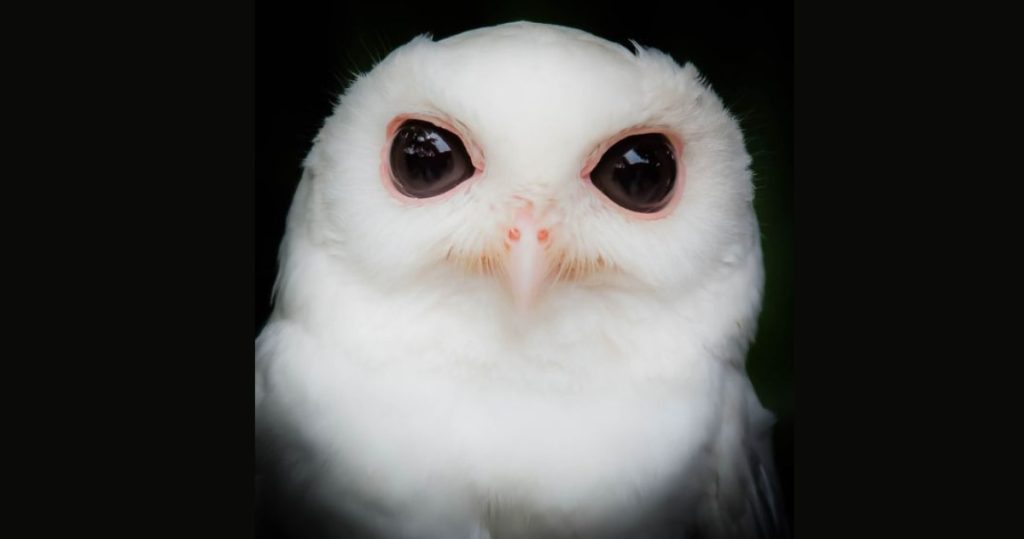
Albino is specifically a recessive genetic trait, in this article, I will deliver important information about Albano Owl with photos.
Albano Owls inherit this trait from their parents. We can see albino characteristics in various owls.
Owls with albino traits are more rare than snowy owls (the white owl species). Albino owls are counted to be less than 0.001% of the other owl population.
Owls with albino traits appear a little different from other owls, which makes these owls more impressive. Let’s know more about Albano Owl below.
Contents
- 1 What is an albino owl?
- 2 Albino owl vs Leucistic owl
- 3 Some species of owls are often Albino
- 4 Albino screech owl
- 5 Albino barn owl
- 6 Albino barred owl
- 7 Albino snowy owl
- 8 Albino great horned owl
- 9 Albino burrowing owl
- 10 Albino eagle owl
- 11 Albino owl vs snowy owl
- 12 Are white owls rare?
- 13 White owl is good or bad
- 14 What does Albino owl eat at night?
- 15 Lifespan of albino owl in the wild
- 16 Male vs female albino owl size
- 17 Is Albino Owl blind or not?
- 18 Albino owl price
- 19 FAQs
- 20 Conclusion
What is an albino owl?

Albino is a special genetic condition found in several animals. This particular condition causes the animals to lack melanin, which gives out body color. Without melanin, the animal’s body would not produce any color, so the animal’s body would appear white.
There we see two types of albinism, oculocutaneous albinism and ocular albinism. Oculocutaneous albinism affects the eyes, skin, and feathers of owls, and ocular albinism affects only the eyes.
According to the National Organization of Albinism and Hypopigmentation (NOAH), ocular albinism can cause the eyeball in vertebrates to turn green, blue, or even brown. Since the eye contains little pigment, light is reflected directly onto the iris.
Of the nearly 254 species of owls that live on Earth, 13 species of owls are albino. Those whose feathers, talons, eye tubes, or cylinders other than the other parts of the body skin are all white.
The lack of melanin in the body causes a disease called leucistic, due to which some parts of the animal’s body do not produce color, and white spots are seen in all the parts.
The risk of albino is about the same between male owls and female owls. If both parents of an animal carry this gene, the offspring of that animal may be albino.
Albino owl vs Leucistic owl

| Albino owl | Leucistic owl |
| albino genetic locus found in all animals, including owls. | In the albino position, the entire body of owls is white or fecal. |
| Albino owls do not have the pigment melanin in their bodies. | In owls with leucistic disease, the body does not produce much melanin. |
| All the body color of leucistic owls is not white, so it is not easy to understand that they are affected by leucistic, their risk is also low. | Albino owls are very difficult to see because they are so rare. |
| When owls have leucistic disease, several parts of their bodies turn white or fecal. | Leucistic owls are comparatively less rare than albino owls. |
| Only 1 in every 100,000 owls is found to be albino. | Leucistic disease occurs in only 1 in every 20,000 owls. |
| The white color of albino owls which attracts predators easily increases the risk of their lives being threatened. | All the body color of leucistic owls is not white, so it is not easy to understand that they are affected by leucistic, their risk is also low. |
Some species of owls are often Albino
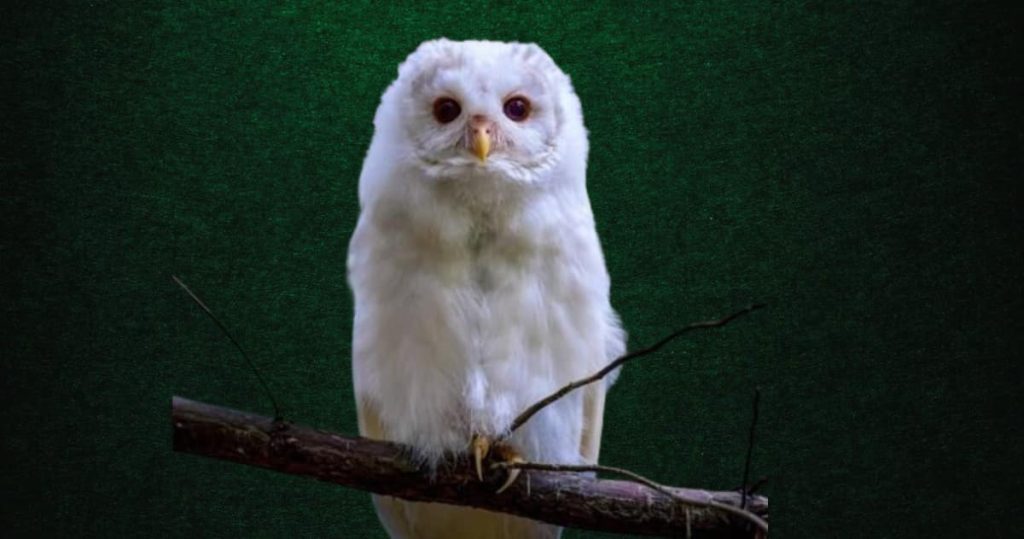
Albinism occurs when the enzyme called tyrosinase is absent due to genetic reasons or when tyrosinase is damaged for some reason. Since 13 of the 254 species of owls are more albino, we have data on these 13 species, and it is difficult to say whether albino genetic traits are present in other species of owls. Some owls are extremely rare, with only 1 in 100,000 owls having the albino trait.
Some species of albino owls are described below –
Albino screech owl
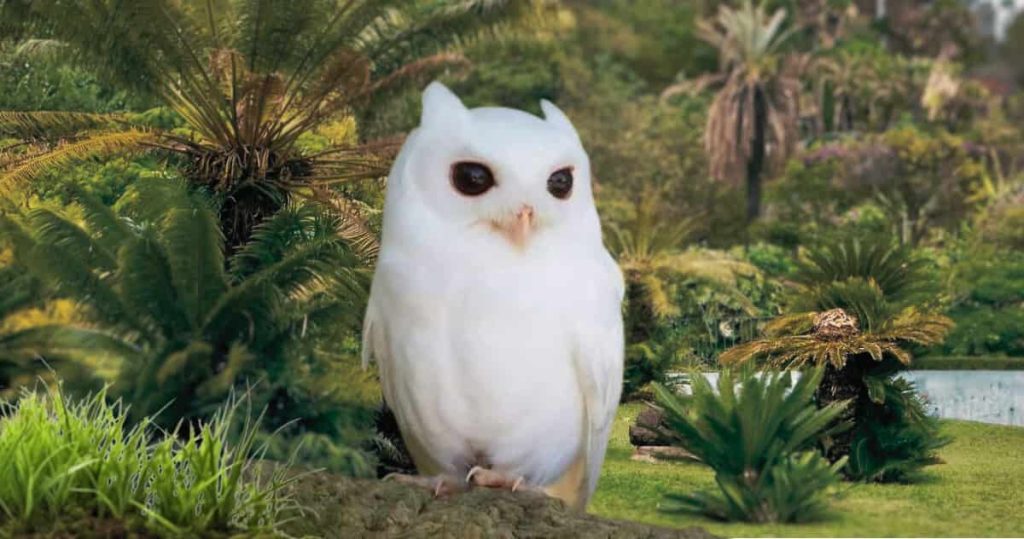
The screech owl is a small species of owl that can be found in two species, the Eastern Screech-Owl currently numbering around 560,000, and the Western Screech-Owl currently numbering around 180,000.
Albino genetic traits can be seen in screech owls. Only 0.1% of rare albino screech owls are seen worldwide, with white feathers, pink or hazel eyes, and pale skin.
Generally, screech owls can live up to 8-10 years in the wild, but in the case of albino screech owls, the life expectancy in the wild is comparatively less.
Their white skin color cannot blend in with the environment which makes them more vulnerable to predators.
Albino barn owl

A medium-sized owl is the barn owl, whose number in the world is about 4 million to 10 million. The barn owl tops the list of the most common owl species found in the world.
Albino genetic traits are seen in barn owls. Less than 0.1% of albino owls are found worldwide.
The average lifespan of a barn owl in the wild is about 4 years, but the average lifespan of an albino barn owl is shorter than that of a normal barn owl.
Albino barn owls are more susceptible to life-threatening diseases and are more likely to be attacked by predators than normal barn owls.
Albino barred owl

A medium-sized owl species is the barred owl, numbering about 3.5 million worldwide. It is one of the most abundant owl species in the world.
Owls of this species are sometimes found to carry the albino gene. Less than 0.1% of albino barred owls are found worldwide.
Barred owls can live a maximum of 8–10 years in the wild but albino barred owls live less in the wild due to their white body color.
In the wild, owls’ skin color serves to blend in with the environment. The albino barred owl’s skin color makes them conspicuous to prey, making them easy prey for predators.
Albino snowy owl

The snowy owl is one of the larger species of owls best known for its beautiful white feathers. There are approximately 200,000 to 300,000 snowy owls worldwide.
Albino snowy owls are very difficult to identify because the snowy owl is so white that it is very difficult to specify the difference between an albino snowy owl and a normal snowy owl.
Snowy owls survive an average of 10 years in the wild. Since I don’t have any information on albino snowy owls, I can say that normal snowy owls and albino snowy owls will have the same lifespan unless the albino snowy owls are diseased.
Both the snowy owl and the albino snowy owl look white, so they have no difficulty in disguising themselves in snowy environments.
Albino great horned owl

A large species of owl is the great horned owl whose number is around 3 million to 7 million worldwide. They are most often found in North, Central, and South America.
Although very rare, albino genetic traits can be traced in great horned owls. The number of albino great horned owls worldwide is extremely rare at about 0.001%.
In the wild, great horned owls live longer than most, about 20 to 30 years. The lifespan of an albino great-horned owl is much shorter than that of a normal great-horned owl.
Albino burrowing owl
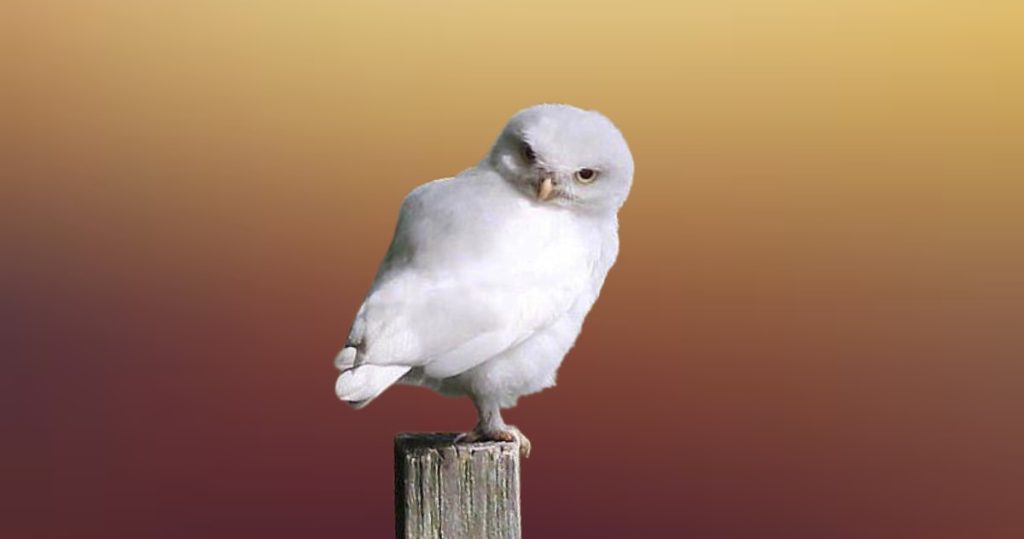
Burrowing owls are a small species of owl found in North America in the US, Canada, and Mexico. Found in South America’s Galapagos Islands, Falkland Islands, Bolivia, Argentina, Colombia, etc.
There are approximately 1 to 10 million burrowing owls in the world. Southern Burrowing Owl, Peruvian Burrowing Owl, Caribbean Burrowing Owl, Galapagos Burrowing Owl, Falkland Island Burrowing Owl, etc. types of Burrowing Owl can be seen.
Very rare albino burrowing owls are found at about 0.001% with white feathers, pale skin, and yellow or light brown eyes.
A normal burrowing owl lives an average life span of 6 to 8 years in the wild and an albino burrowing owl survives several years less than normal burrowing owls.
Albino burrowing owls do not live a happy life like normal burrowing owls because they are prone to disease and attack by predators.
Albino eagle owl
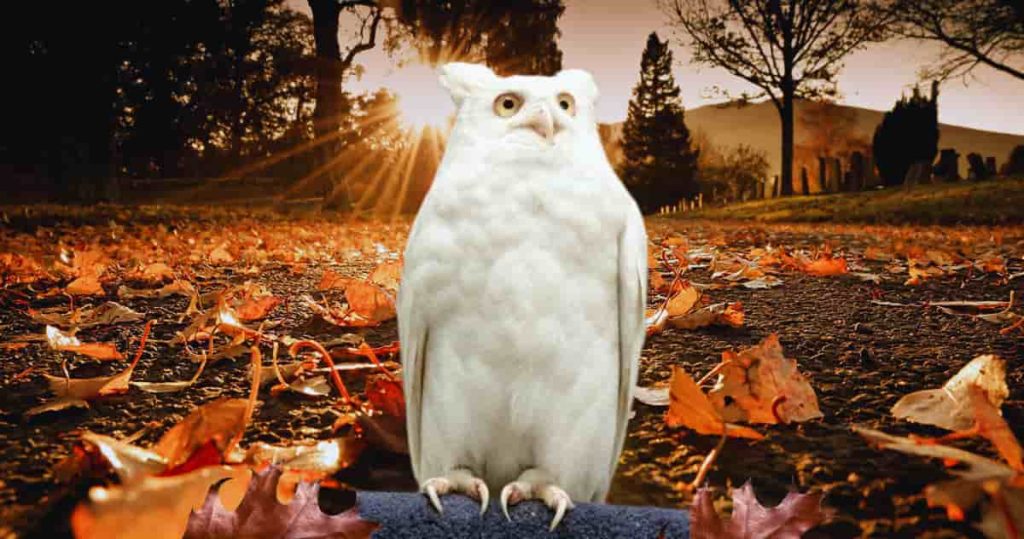
The number of this large species of owl is found around 100000 to 500000 around the world, which can be seen in Asia, Europe, Northern Africa, the Arabian Peninsula, and the Middle East.
Albino eagle owls are rarely seen. Their number is less than 0.001% in the entire world.
While the average lifespan of an eagle owl in the wild is 15-20 years, an albino eagle owl faces several problems due to its genetic makeup which results in a shorter life expectancy.
They appear to be more aggressive towards prey than other species of owls. However, albino eagle owls have difficulty camouflaging with the environment, which is why they sometimes become the prey of a predator.
Albino great horned owls face many problems in the wild because of their body color. The albino great horned owl is easily spotted by owl predators.
Albino owl vs snowy owl
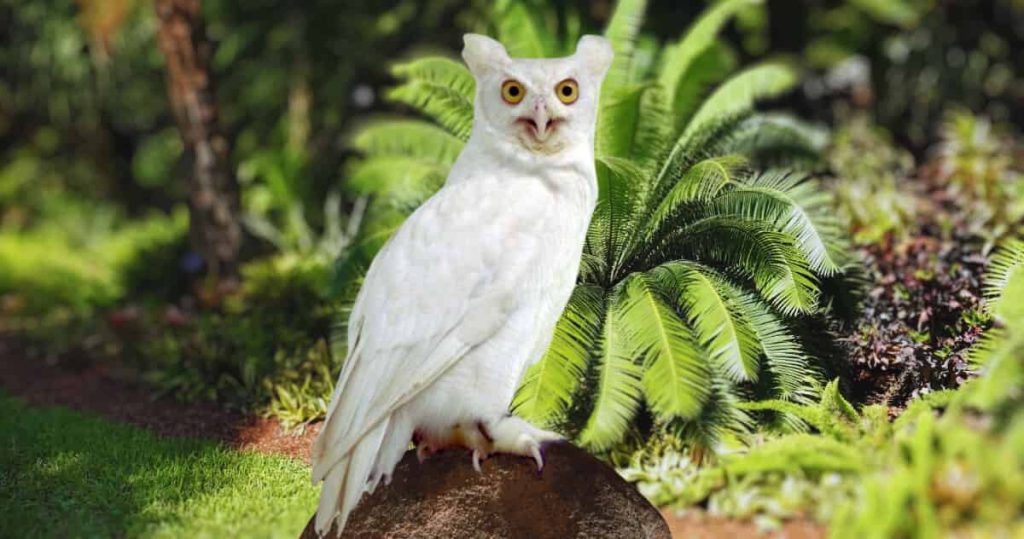
| Albino owl | snowy owl |
| Albino owl is a genetic variation that occurs in a very small number of owls. | The snowy owl is one of the 254 species of owl found in the world. |
| Albino owls have pale white skin and pink eyes due to a lack of melanin. | Snowy owls have melanin but not enough to give them their natural color so they are white. |
| Albino owls find it difficult to blend in with the environment because the white color is unusual for the environment in which they live. | Albino owls have an increased risk of photophobia, nystagmus, amblyopia, etc. |
| Albino owls have an increased risk of photophobia, nystagmus, amblyopia, etc. | Snowy owls have the same disease as an owl. |
| Albino owls have a shorter life expectancy than normal owls. | The average lifespan of snowy owls is normal for their species. |
Are white owls rare?
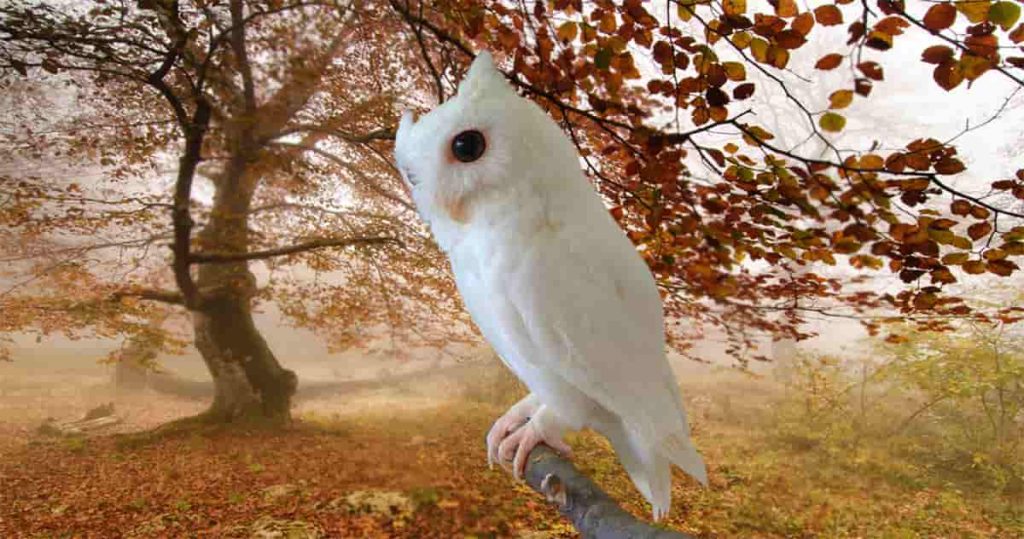
White owls were originally referred to as snowy owls. Snowy owls live in cold regions such as the Arctic, subarctic, and boreal in North America, and Eurasia. They have adapted to the snowy environment, but snowy owls are not rare. Snowy owls are abundant all over the world.
Albino genetic mutations are found in several species of owls, and a disease called leucistics causes owls to lack the body’s melanin, which causes white feathers, skin, nails, beaks, and pink or orange eyes.
Albino owls and leucistic owls are very rare, about 1 in 100,000 owls, so these owls are very rare, and these owls are easily spotted by hunters due to their body color. Because of this, these white owls have a shorter lifespan than normal owls.
White owl is good or bad

In Greek culture and Hindu culture, the white owl is revered as a symbol of wisdom, prosperity, and protection. But I cannot say that the mythology of owls can have any faith.
Snowy owls are usually white, and some barn owls are white. Owls with albino genetic mutations and leucistics are usually white.
Owls are beautiful birds of prey in nature that help maintain ecosystem balance by eating various small animals in our environment. So, owls are considered good for the environment.
However, albino owls and leucistic owls face many types of diseases including amblyopia (loss of vision in one eye), nystagmus (involuntary eye movements), photophobia (light sensitivity), etc.
Albino and leucistic owls without the above-mentioned diseases are more likely to be predated by other predators due to which a typical owl lives fewer days in the wild.
What does Albino owl eat at night?
Owls are skilled nocturnal hunters, albino owls eat the same prey as a typical owl, but their prey list may vary slightly between species.
Albino owls prey on small mammals such as mice, rats, voles, and bats, and also on larger animals such as rabbits, and small birds such as sparrows, finches, robins, and insects.
The best information about the diet of owls can be found by testing owl poop and owl pellets, so if you are a bird lover and want to know the diet of owls living next door, you can check their pellets.
Animal bones, fur, feathers, teeth, beaks, nails, etc. contained in owl pellets can reveal important information about your owl’s diet.
Lifespan of albino owl in the wild
Owls have a shorter lifespan in the wild because they are more vulnerable to disease and are more likely to be predated by other predators, so the average lifespan of an owl in captivity is 25 to 30 years, whereas the average lifespan of an owl in the wild is 10 to 15 years.
The lifespan of owls varies depending on their species such as the average lifespan of a large owl in the wild is 15 to 20 while a small owl has an average lifespan of only 5 to 10 years in the wild.
Albino owls have a very short life expectancy because they are more susceptible to disease and because of their white color they cannot blend in with the environment and become prey for predators.
Albino owls have an average lifespan of 3 to 7 years in the wild. An albino owl’s average lifespan in captivity is about 25 to 30 years, like a normal owl.
Male vs female albino owl size
A Common Owl Female owls are larger than males. About 254 species of owls can be seen in small, large, and medium sizes in the world.
Male and female albino owls can vary in size from species to species just like common owls. Different species of owls usually have the same size as species of albino owls.
Below are the sizes of several species of male and female owls –
| Sl. No. | owl species | size |
| 1 | Barn Owl | Male: 12-14 inches Female: 14-16 inches |
| 2 | Great Horned Owl | Male: 18-22 inches Female: 20-25 inches |
| 3 | Little Owl | Male: 8-9 inches Female: 8-10 inches |
| 4 | Long-eared Owl | Male: 13-16 inches Female: 14-18 inches |
| 5 | Short-eared Owl | Male: 13-17 inches Female: 15-19 inches |
| 6 | Barred Owl | Male: 16-21 inches Female: 17-24 inches |
| 7 | Boreal Owl | Male: 8-12 inches Female: 8-13 inches |
| 8 | Burrowing Owl | Male: 7-9 inches Female: 7-10 inches |
| 9 | Snowy Owl | Male: 20-25 inches Female: 23-28 inches |
| 10 | Eastern Screech Owl | Male: 6-8 inches Female: 7-10 inches |
| 11 | Powerful Owl | Male: 19-25 inches Female: 21-28 inches |
| 12 | Hawk-owls | Males: 14–17 inches Female: 15–18 inches |
Is Albino Owl blind or not?
Albino is a genetic condition in vertebrates that increases the chance of their offspring inheriting the albino trait if both parents carry the gene.
Albino owls are not blind, but because they do not have melanin in their bodies, the tubes or cylinders without the retina are pink or orange in color.
Albino owls suffer from more eye diseases than normal owls. Albino owl’s eyes are more sensitive to light so they cannot tolerate much light.
Albino owls also show signs of involuntary eye movements, as well as poor vision in one eye. But the good news for owls is that they are nocturnal so they don’t have to deal with too much light.
Albino owl price
Several countries have protected owls as birds with their laws. In all these countries it is illegal to sell owls, disturb owls, keep owl feathers, keep owl eggs, kill, capture, etc.
In the United States, all species of owls, including the albino owl, are protected under the Migratory Bird Treaty Act of 1918.
Most owl species are protected in Canada by the Migratory Birds Convention Act (MBCA), the Species at Risk Act (SARA), and the Provincial and Territorial Wildlife Acts.
Owls are fully protected in the UK by the Wildlife and Countryside Act 1981, Special Protection Areas (SPAs) and Sites of Special Scientific Interest (SSSIs), and The Conservation of Habitats and Species Regulations 2017.
In Australia, owls are protected by various federal and state laws, such as the Environment Protection and Biodiversity Conservation Act 1999 (EPBC Act), the Migratory Species Protection Act 1986, state and territory wildlife acts, and Threatened Species Conservation Acts to protect all owls, including the albino owl. has been
Owls are beneficial birds in our environment that are prohibited for sale because they have no real value.
FAQs
Q. What owls are white?
Ans: Snowy owls are usually white. Also, all species of albino owls with genetic problems are white.
Q. What is a white owl called?
Ans: Snowy owls are known as white owls. Also, albino owls are known as white owls.
Q. What owls are pure white?
Ans: Albino owl is pure white. Besides, some snowy owls can also be seen in pure white.
Q. What does an albino owl look like?
Ans: Albino owls have white feathers, pale skin, pale claws and beaks, and pink or more orange eyes.
Q. Can an owl be Albino?
Ans: Yes, most species of owls can be albino, but it is so rare that they are not easily seen.
Conclusion
As the rarity increases, albino owls are extremely rare and attract bird lovers like us. I have provided all the information about albino owls and leucistic owls above. If you have any queries related to Owl, you can comment in the comment box.
We must aim to ensure that this rare animal can roam freely in our environment. If necessary, we can help owls by making artificial nests near our house. A little awareness on our part can give owls a comfortable life.